Best Cordless One-Handed Reciprocating Saw Head-to-Head
Cordless One-Handed Reciprocating Saws
Cordless one-handed reciprocating saws are a fairly new category compared to the long-standing king of demolition in full-size reciprocating saws. Born out of the desire for smaller, more compact tools, the one-handed reciprocating saw has become extremely popular with plumbing and mechanical contractors. For this head-to-head comparison six one-handed reciprocating saws running at 18 volts (except one model that runs at 21.6 volts).
This evaluation includes a comparison of features, ergonomics, performance, and pricing. If you’re trying to decide on a new cordless one-handed reciprocating saw then this article should help you identify the best one.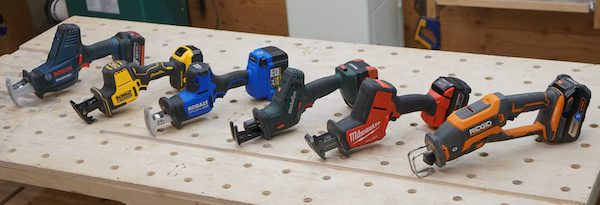
One-Handed Reciprocating Saw Line-up
Six cordless one-handed reciprocating saws were included in this head-to-head comparison. Makita was also invited to participate but opted out (more than likely due to having a rather old model in the mix, we can speculate may be a newer version in the near future). The models include the following:
Bosch GSA-18V-083B 18V Compact Reciprocating Saw
- No Load SPM: 0-3,050
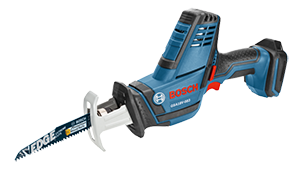
- Stroke Length: 0.83″
- Weight: 4.4 lbs (bare tool)
- Battery Voltage: 18 V
- Toolless Blade Change
- LED Work Light
- Variable Speed Trigger
- Fixed Shoe-plate
- Length: 14.4″, Width: 2.6″, Height: 7.1″
- Bosch GSA-18V-083B
DEWALT DCS369B ATOMIC 20V MAX* Cordless One-Handed Reciprocating Saw
- No Load SPM: 0-2,800
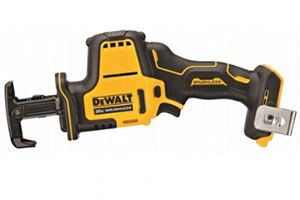
- Stroke Length: 0.625″
- Weight: 3.1 lbs (bare tool)
- Battery Voltage: 18 V (20V MAX under no load)
- Battery Pack Used: 5.0 Ah
- Tool-Free Blade Change
- LED Work Light
- Variable Speed Trigger
- Pivoting Shoe-Plate
- Length: 12.5″, Width: 2.6″, Height: 5.4″
- DEWALT DCS369B
Kobalt KRS 124B-03 Compact One-handed 24-Volt Max Variable Speed Brushless Cordless Reciprocating Saw
- No Load SPM: 0-3,000
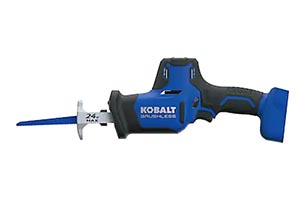
- Stroke Length: 1″
- Weight: 4 lbs (bare tool)
- Battery Voltage: 21.6 V (24V MAX under no load)
- Battery Pack Used: 6.0 Ah
- Tool-Free Blade Change
- Variable Speed Trigger
- Fixed Shoe-plate
- Length: 13.4″, Width: 2.9″, Height: 5.5″
- Kobalt KRS 124B-03
Metabo 602266890 SSE 18 LTX Compact Cordless Reciprocating Saw
- No Load SPM: 0-3,100
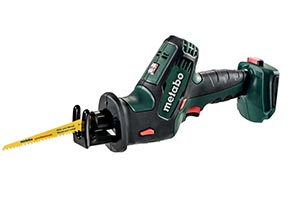
- Stroke Length: 0.5″
- Weight: 3.7 lbs (bare tool)
- Battery Voltage: 18 V
- Battery Pack Used: 5.5 Ah
- Tool-Free Blade Change
- LED Work Light
- Variable Speed Trigger
- 6 Position Fixed Shoe-Plate
- Length: 12.3″, Width: 3″, Height: 6.5″
- Metabo 602266890
Milwaukee 2719-20 M18 FUEL™ Hackzall®
- No Load SPM: 0-3,000
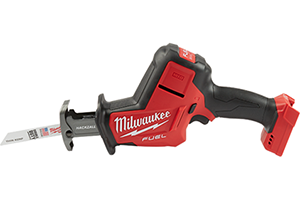
- Stroke Length: 0.875″
- Weight: 4.1 lbs (bare tool)
- Battery Voltage: 18 V
- Battery Pack Used: 5.0 XC Ah
- Tool-Free Blade Change
- LED Work Light
- Variable Speed Trigger
- Pivoting Shoe-Plate
- Length: 14″, Width: 3″, Height: 6.5″
- Milwaukee 2719-20
Ridgid R86448B OCTANE™ Brushless 18V One-Handed Reciprocating Saw
- No Load SPM: 0-3,000
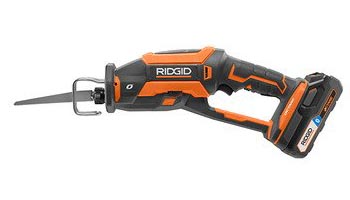
- Stroke Length: 0.75″
- Weight: 4.6 lbs (bare tool)
- Battery Voltage: 18 V
- Battery Pack Used: 6.0 Ah
- Tool-Free Blade Change
- LED Work Light
- Variable Speed Trigger
- Fixed Shoe-plate
- Length: 15″, Width: 3″, Height: 5.7″
- Ridgid R86448B
Comparison of Features
Comparing tools from multiple brands is never easy but the devil can live in the details at times so a comparison is certainly warranted. With the exception of the Kobalt, all the remaining 5 cordless one-handed reciprocating saws are built on an 18-volt platform. The Kobalt is a 21.6-volt tool (24 V MAX). All six are similar one-handed compact reciprocating saws with very similar characteristics.
This group of tools has quite a few features that match across the board including:
- Brushless Motor
- LED work light
- Lock-Off Switch
- Tool-Free Blade Change
- Variable Speed Trigger
So the subtleties and differences between the tools with regards to the features aren’t great. The biggest differences that may play a big role in determining which tool is best for you comes down to stroke length and blade speed. Below are charts comparing the tools for both stroke length and blade speed.
As you can see above there is a wide range in stroke length from 1/2″ up to 1″. Also, the blade speeds range from 2,800 to 3,100 strokes per minute. It should be noted the blade speeds are “no-load” speeds that the manufacturers publish and not something that was measured during testing. So what does this mean for users? Theoretically speaking, if you were to multiply the blade speed times the stroke it would produce total stroke length (cutting length) per minute which should give an idea of how much material can be cut during a given time period assuming all things are equal like the actual blade used.
Based on the theoretical calculation of cut length per minute the Kobalt leads the way at 3,000 in/min down to the Metabo at only 1,550 in/min. If the speed of cutting materials is an important factor in your selection process this is something to keep in mind. Now, it’s very important to remember this is just a theoretical calculation and doesn’t take into account the motor and electronics ability to provide sufficient power to make the cut. Later in the article, we’ll provide several cutting applications with timed cuts for a more realistic comparison of performance.
Stand-out Features
The Metabo unit has two features that stand out from the other saws in the comparison. Both features are unique enough to point out and might be an important factor in which saw you choose:
- Unique Quick Blade Retainer – This allows users to use both reciprocating saw blades and jigsaw blades. While these are certainly not jigsaws, having the ability to throw a jigsaw blade in just provides more opportunities and versatility.
- 6 Position Adjustable Shoe-plate – This is the only saw in the group that has an adjustable depth shoe-plate. The ability to limit the depth of cut can be very important in some situations where cutting too deep could be damaging to underlying materials.
Final Thoughts on Features
This category isn’t ranked as most of the cordless one-handed reciprocating saws have very similar features. However, these features may impact your final rating so they are presented here for easy reference.
Ergonomics Evaluation
Winner – DEWALT DCS369B
The ergonomics evaluation in this section is purely subjective and based on the opinions of the testing crew. After a full day of running performance tests, the team sat down and ranked each tool in several categories. For the ergonomics evaluation, the team evaluated a number of criteria including:
- Grip
- The overall feel of the over-mold, grip surface, and hand contour.
- LED Effectiveness
- All LED work lights are not created equal, so the team evaluated the effectiveness of the light on the work surface.
- Switches
- The evaluation includes the location of switches and the ability to work without the accidental engagement of switches.
- Balance
- The overall balance of the tool in different cutting positions.
- Blade Change
- Every tool in this category included a tool-free blade change design. The comparison focused on the ease of changing blades.
- Vibration
- For this category, each evaluator ranked the tools based on perceived vibration while performing each of the performance tests. The average ranking was used for the final vibration ranking.
- Weight
- Each bare tool was weighed and used to rank the tools from lightest to heaviest. Being a one-handed tool weight is an important consideration to prevent fatigue.
- Size
- In order to compare to the overall size (compactness) of the saws, the length, width, and height of each tool were multiplied to develop an average tool volume for comparison. The tools were ranked from smallest to largest. Smaller more compact tools are easier to operate in tight spaces and therefore preferable with respect to ergonomics.
| Grip | LED Light | Controls | Bal. | Blade Ch. | Vibration | Wt | Size | TOTAL | RANK | |
|---|---|---|---|---|---|---|---|---|---|---|
| DEWALT | 1 | 1 | 1 | 1 | 2 | 1 | 1 | 1 | 9 | 1 |
| Milwaukee | 2 | 2 | 2 | 2 | 4 | 4 | 4 | 6 | 26 | 2 |
| Metabo | 4 | 4 | 4 | 3 | 3 | 6 | 2 | 3 | 29 | 3 |
| Bosch | 3 | 6 | 3 | 4 | 4 | 2 | 5 | 5 | 32 | 4 |
| Kobalt | 5 | 5 | 5 | 5 | 5 | 3 | 3 | 2 | 33 | 5 |
| Ridgid | 6 | 3 | 6 | 6 | 1 | 5 | 6 | 4 | 37 | 6 |
As you can see above the DEWALT clearly beat out the competition scoring first place in every category except the blade change ranking. The second-place tool was the Milwaukee. Finishing just ahead of the others was Bosch in third place. Clearly this data is extremely subjective, however by using the average ranking for all of our testers we feel strongly that the data is a good representative of how these tools compare on an ergonomics perspective.
Performance Evaluation
Winner – Tie Between Kobalt and Milwaukee
Specifications, features, and ergonomics are all important, but at the end of the day tool performance is huge. For this evaluation, the team followed a similar approach to the Best Cordless Reciprocating Saw head-to-head we previously published.
Four tests were developed and utilized for the performance evaluation including:
- Cutting 3/4″ cast iron gas pipe – Blade: Milwaukee Torch with Carbide 7 TPI
- Cutting 12 Gauge P1000 Unistrut (1-5/8″x 1-5/8″) – Blade: Milwaukee Torch Metal Blast 18 TPI
- Cutting 2″ copper pipe – Makita 14 TPI Bi-Metal
- Cutting nail embedded wood (2×12 SPF with 4-16D nails) – Diablo Demo Demon 6″ Carbide 5/7 TPI
Each saw used a new blade for each test. For each test, a fixed weight of 8.25 lbs was hung from a rope over the front grip of the saw at a standard distance of 3″ from the shoe plate and the trigger squeezed on to full speed. The operator held only the rear grip and let the hanging weights provide the force to make the cuts. Five cuts for each tool were timed and used to calculate the average cut time as shown in the summary charts below.
All of the one-handed reciprocating saws used batteries ranging from 5.0 Ah to 6.0 Ah. Because all of the tools had similar voltages and battery pack sizes, no adjustments to data were performed.
3/4″ Cast Iron Pipe Test Results
As you can see above in Figure 4, there was a big difference between the top 4 saws and the last two. The Kobalt came in first place for this test with an average cut time of 10.77 seconds followed by Milwaukee in second at 11.42 seconds and Ridgid in third with 14.05 seconds. Both DEWALT and Metabo struggled to keep up with the field with time ranging from over 2 to 4 times longer than the top 4 tools.
When you look back at Figure 3 – Total Cut Length, you can see both Metabo and DEWALT had the shortest cut length/min suggesting that they would likely perform much slower than the faster saws with longer strokes. So these results are not entirely surprising.
Unistrut Test Results
Above in Figure 5 are the results of the Unistrut cutting test. The results vary greatly between the first 3 tools and the last 3. For this test Kobalt came in first with the fastest average time of 17.91 seconds followed closely in second by Ridgid with a time of 19.64 seconds and Milwaukee in third place with an average time of 22.43 seconds. Again the results seem to correlate well with Figure 3 where the total cut length per minute was calculated based on no-load speeds.
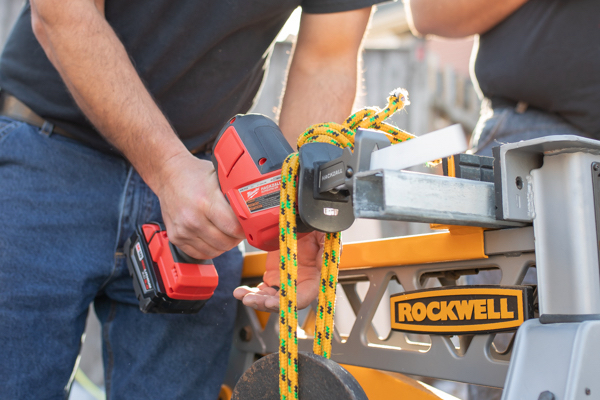 Copper Pipe Test Results
Copper Pipe Test Results
Figure 6 above presents the results of the 2″ copper pipe test. Once again the top 4 performed much better than the last two, again following the predicted performance based on the total cut length per minute. This test is a much less aggressive test which resulted in much closer results. Finishing in first place with the fastest time was Ridgid with an average cut time of 9.19 seconds followed by Milwaukee in second place with an average time of 9.47 seconds and Bosch in third place with an average time of 10.08 seconds.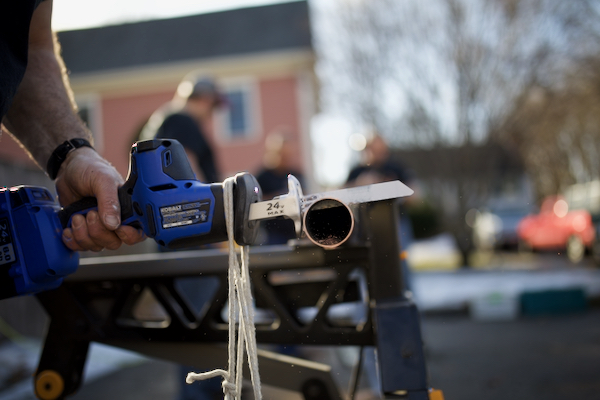
Nail Embedded Wood Test Results
The results of the final performance test are shown above in Figure 7 for the nail embedded wood test. This is a bit more rigorous test and resulted in a wider spread of the results, but again the top 4 finished much faster than DEWALT and Metabo. Milwaukee finished in first place with the fastest average time of 18.0 seconds followed closely by Kobalt with an average time of 18.2 seconds and Ridgid in third place with an average time of 22.5 seconds.
Final Performance Test Results
The table below summarizes all four of the performance tests to produce a final ranking. Each of the test rankings is added together to come up with a total score, the lower the score the better the final ranking. Finishing with a tie for first place was Kobalt and Milwaukee with a total rank score of 8. Coming in a very close second place was Ridgid with a total rank score of 9. Coming in third place was Bosch with a total rank score of 15.
| Gas Pipe | Unistrut | 2" Copper | Nail Embedded | TOTAL | RANK | |
|---|---|---|---|---|---|---|
| Kobalt | 1 | 1 | 4 | 2 | 8 | 1 |
| Milwaukee | 2 | 3 | 2 | 1 | 8 | 1 |
| Ridgid | 3 | 2 | 1 | 3 | 9 | 2 |
| Bosch | 4 | 4 | 3 | 4 | 15 | 3 |
| Dewalt | 5 | 5 | 5 | 5 | 20 | 4 |
| Metabo | 6 | 6 | 6 | 6 | 24 | 5 |
Pricing Evaluation
Winner Kobalt
For this cordless one-handed reciprocating saw head-to-head all six tools are available as a bare tool. This makes comparing the prices much easier. Below is a chart of the current (at the time of publishing this article) prices.
As you can see above the cordless one-handed reciprocating saws are quite affordable even on the high end. Ranging in cost from $99 for the Kobalt on the low end and $159 for the Milwaukee on the high end.
After much feedback from our readers over the years about how we determine our final rankings for head-to-head evaluations, we’re going to try something new for this one. We can all agree that price is an important factor when purchasing tools. This is especially true for small contractors and those just starting in the trades. In the past, we’ve always weighted the price equally with other categories like ergonomics and performance. For this head-to-head, the Price Rankings will count for 20% in the final rankings while ergonomics and performance will each count for 40%.
Buy Now From Our Sponsored Retailers
Best Cordless One-Handed Reciprocating Saw
Winner Milwaukee
The winner of our Best Cordless One-Handed Reciprocating Saw head-to-head evaluation is the Milwaukee 2719-20 M18 FUEL™ Hackzall®. Milwaukee finished tied for first place in the performance evaluation and second for ergonomics. While it was the most expensive saw in the field it’s still a very affordable price at $159. Milwaukee has been the leader in reciprocating saws for many years so it would be a huge surprise if they didn’t lead this newer compact category.
Coming in a very close second place and a bit of a surprise to the team was the Kobalt KRS 124B-03 Compact One-handed 24-Volt Max Variable Speed Brushless Cordless Reciprocating Saw. This saw tied for first place in the performance evaluation and finished first in pricing at just $99. This one-handed reciprocating saw has an impressive 1″ stroke length matched with 3,000 strokes per minute resulting in really fast cut times.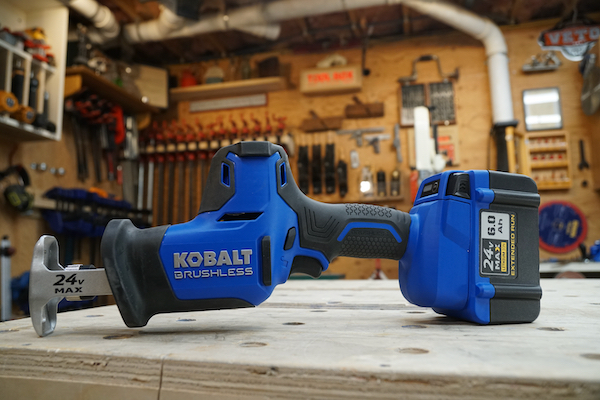
Finishing in third place was the DEWALT CS369B ATOMIC 20V MAX* Cordless One-Handed Reciprocating Saw. This saw blew away the competition in the ergonomics evaluation and is significantly more compact than the rest of the field. While it didn’t do as well in the performance category it’s a solid choice for someone looking for a really compact option.
| Ergonomics (2X) | Performance (2X) | Pricing (1X) | Weighted TOTAL | RANK | |
|---|---|---|---|---|---|
| Milwaukee | 2 | 1 | 6 | 12 | 1 |
| Kobalt | 5 | 1 | 1 | 13 | 2 |
| DEWALT | 1 | 4 | 5 | 15 | 3 |
| Bosch | 4 | 3 | 2 | 16 | 4 |
| Ridgid | 6 | 2 | 3 | 19 | 5 |
| Metabo | 3 | 5 | 4 | 20 | 6 |
As noted above in the pricing section this head-to-head deviated a bit from our previous evaluations in how we calculated the final rankings. After much consideration, the pricing category was reduced in importance to the final ranking. For this final ranking, ergonomics and performance were weighted at 40% each while the pricing was only weighted at 20%. The team felt that ergonomics and performance are more important when choosing a tool, but also acknowledging that price can be a factor for some users.
Ultimately all of the data is shared here so each person can make their own rankings and selections based on what’s important to you. If pricing doesn’t matter at all then eliminate that data and make your own choice. Our team will continue to adjust as we get more experience producing these head-to-head evaluations.
Final Thoughts – One-Handed Reciprocating Saws
The more compact cordless one-handed reciprocating category is clearly here to stay as it offers an extremely versatile, compact cutting solution for many trades. The performance is quite impressive for a small compact tool and something everyone should consider for their arsenal of tools. Obviously, if you’re already invested heavily in a battery platform you’ll likely stick with that brand, but now you’ve got the data to help you understand the capabilities of these tools and how they compare to the competition. You can also check our our Best 7-1/4″ Cordless Circular Saw Head-to-Head.
Best Cordless One-Handed Reciprocating Saw Head-to-Head Video Review
About the author
8 Comments
Leave a comment
Disclosure
Product reviews on this site contain our opinion of a product or service. We will always strive for objectivity and transparency in our reviews. Our goal is to provide readers with honest, objective information based on our own experiences. We never have and never will accept payment in exchange for a positive review. Many of the products that we review are provided to us for free by a manufacturer or retailer. In some cases, we also have advertising or affiliate relationships with manufacturers and retailers of products and services we review. For additional information please visit our additional disclosure policies.











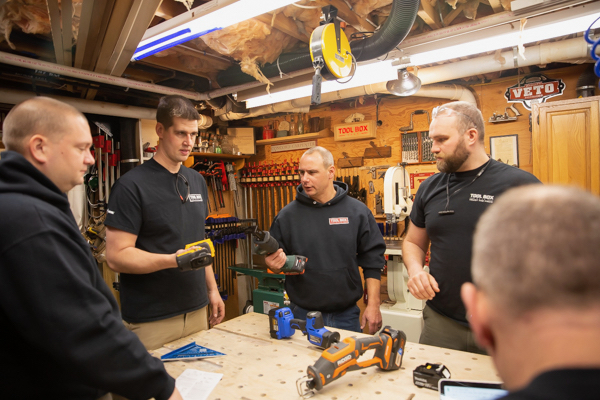
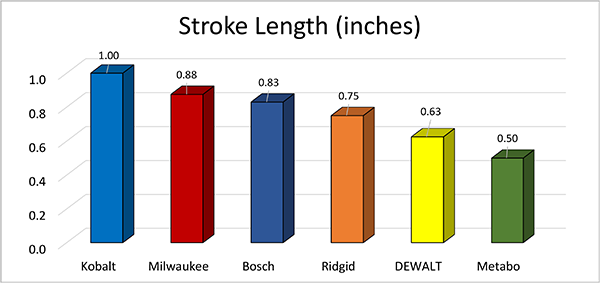
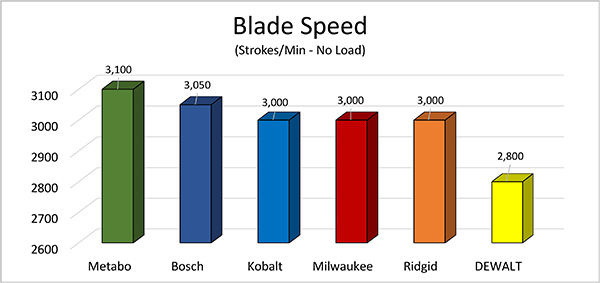
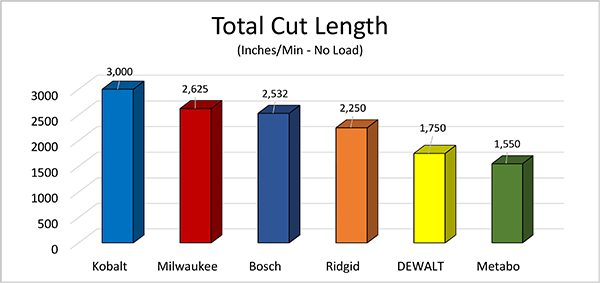
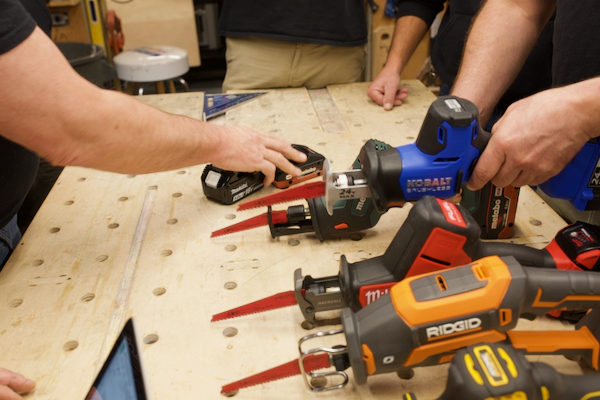
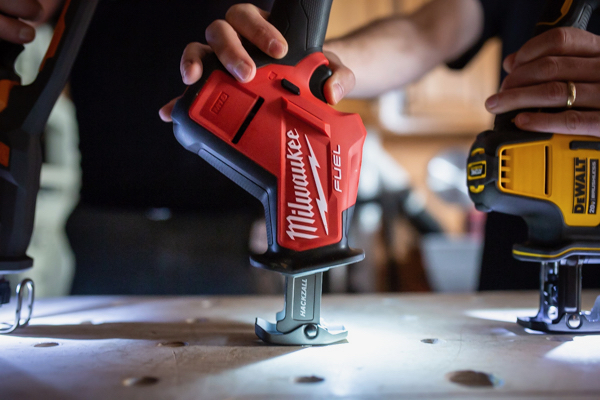
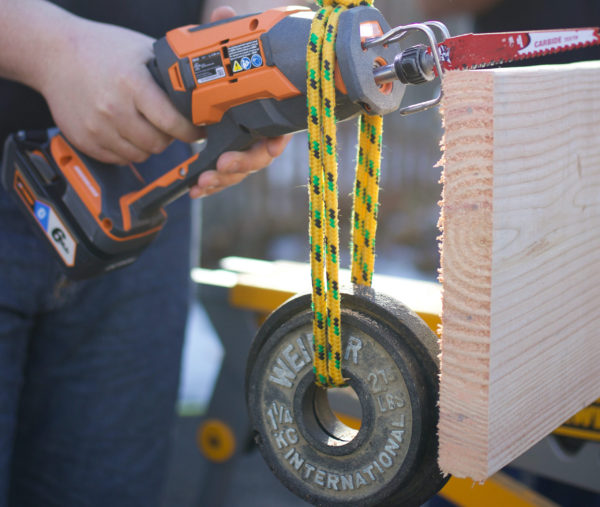
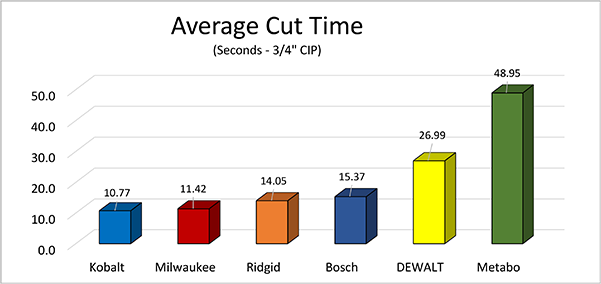
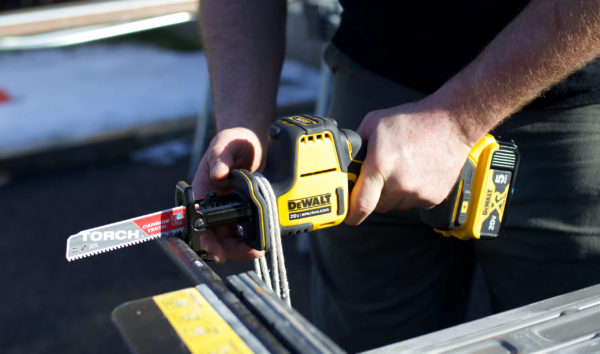
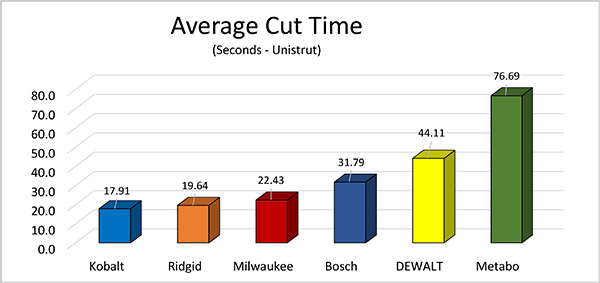
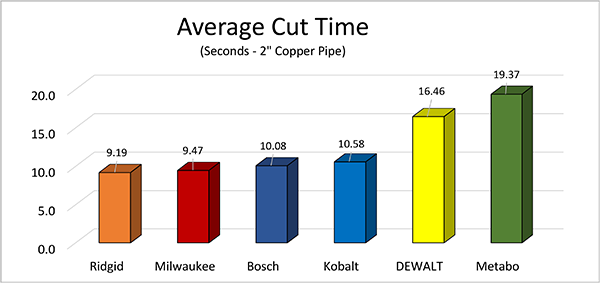
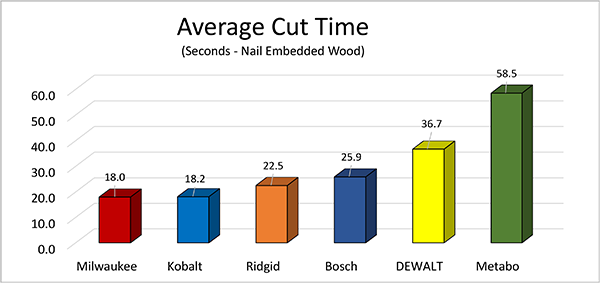
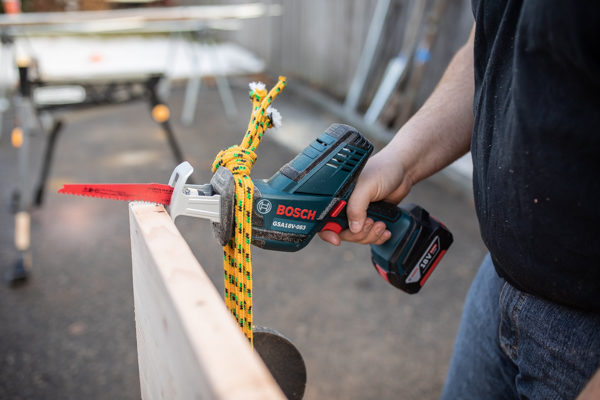
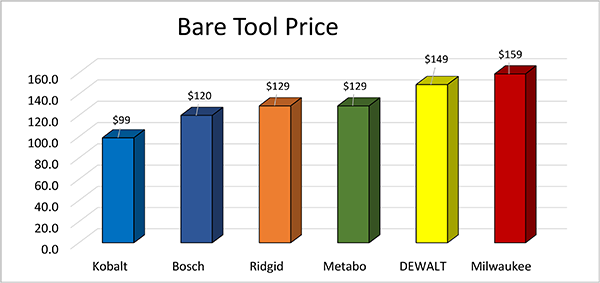
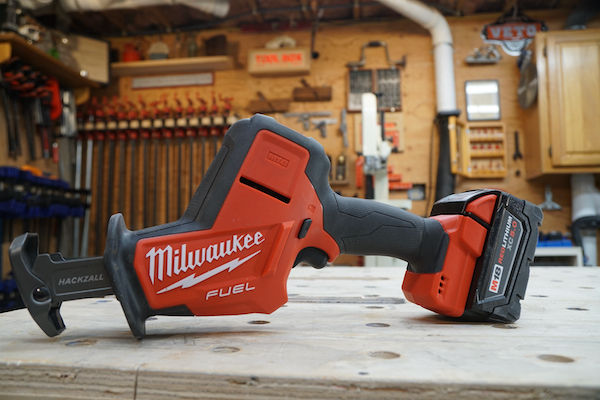
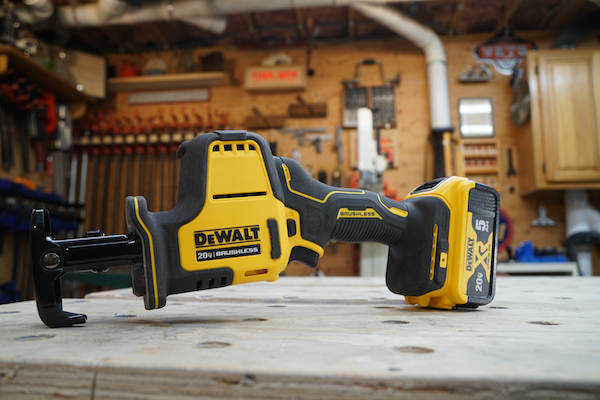
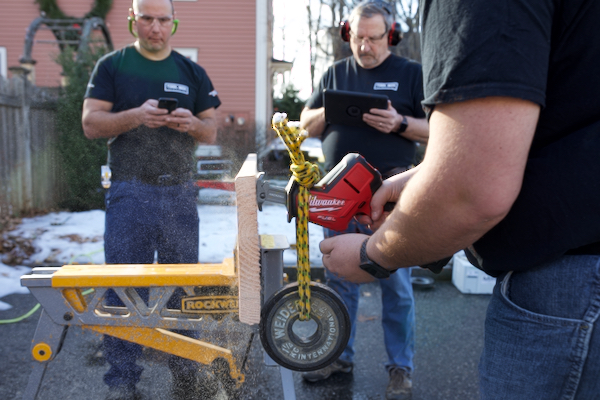
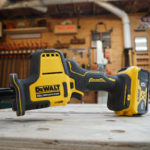
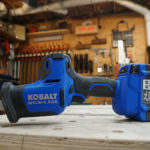
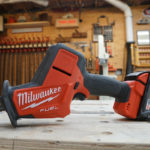
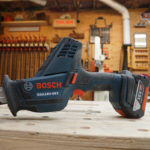
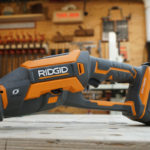
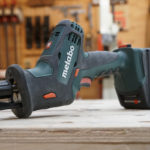
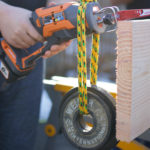
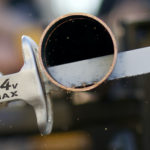
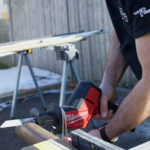
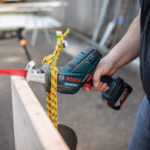
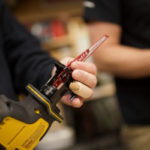
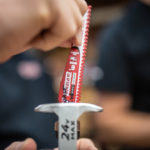
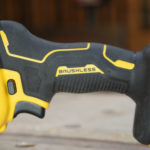
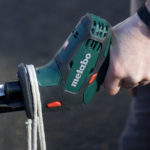
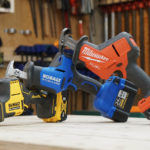
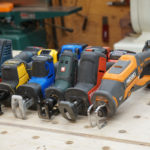
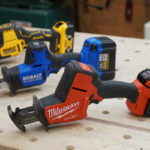
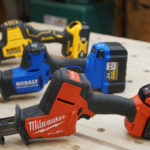
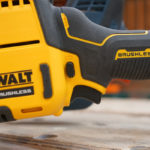
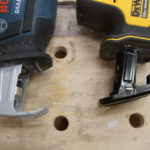
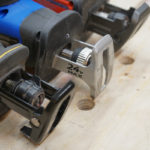
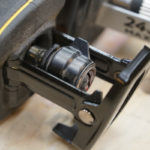
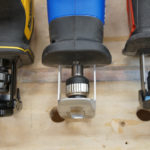
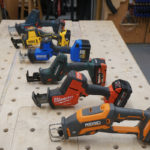
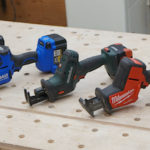
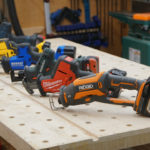
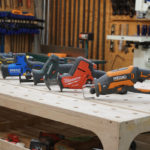
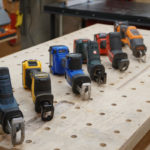
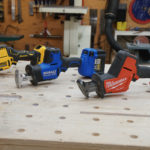
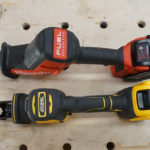
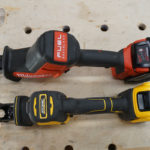
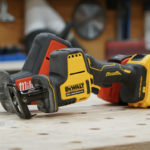
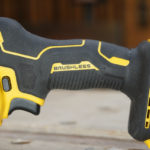
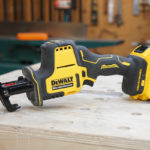
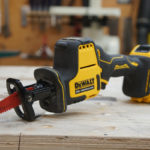
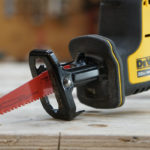
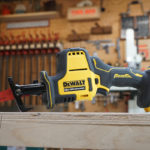
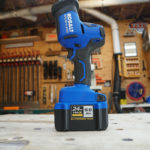
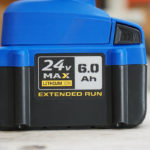
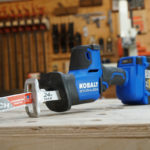
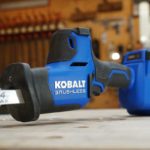
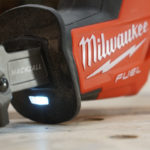
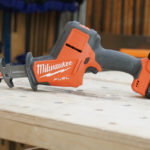
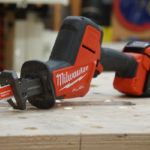
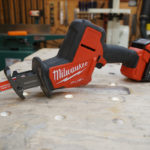
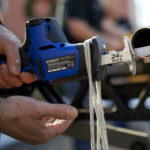
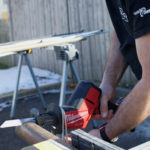
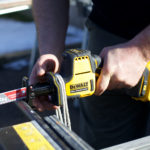
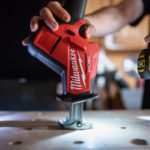
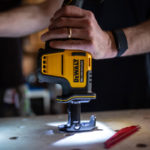
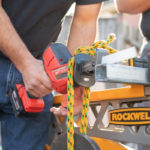
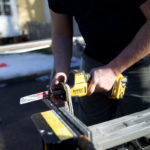
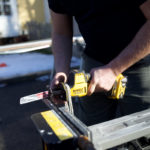
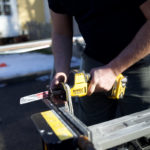
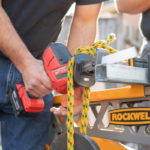
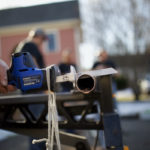
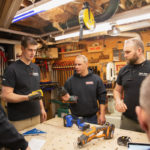
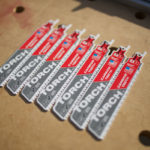
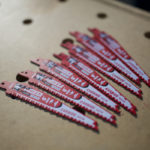

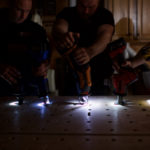
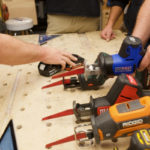
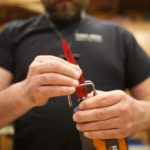
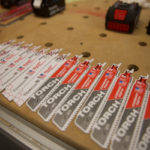
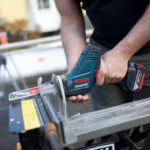
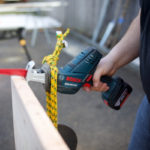
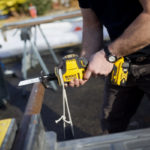
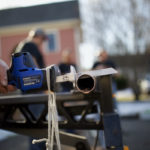
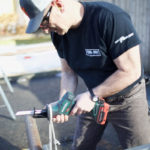
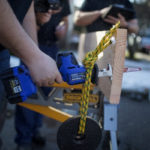
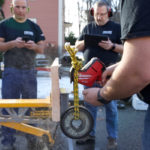
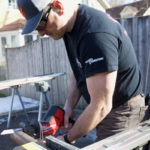
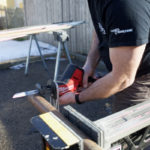
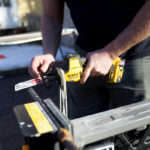
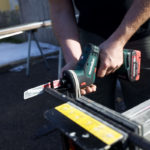
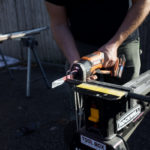












I’m NOT making any accusations by saying this but, I was wandering if the testers might make different choices at times if they didn’t know what brand or color of the tool there testing. There is one brand that I had a big problem with back in the nicad days of tools and the manufacturer not standing behind there crappy batteries. I know for me if I saw that brand I would always remember them ripping me off for a few thousand in batteries and I would most likely always put that tool at the bottom if I was reviewing them. Just wandering if they were all painted the same color if it would have any effect in the unbiased opinion.
Bill – It’s a valid question for sure. This is why we make our subjective rankings based on the opinion of several guys. In most of these head-to-head tests we have between 5 and 8 guys on the team that day. It’s no secret that some guys favor one brand over the other, mostly because they use that brand a lot on the job. But we are fortunate to have some great guys on the team that work really hard trying to put aside personal bias and find the best tool in the group. Having that many different points of view really helps cut through that. Anyway…great question and thanks for pointing that out.
Thanks I love these tests I find them extremely helpful.
Thank you everyone. ✌
With regard to the common features list above, the Bosch saw dose’nt have a brushless motor. Its a relatively old tool compare to the competition here. About 10 years old.
(At least the european version, GSA 18V-LI).
Actually, I am waiting Bosch to come uot with a new 18v cordless, brushless recip., one hand saw and 18v brushless jigsaw.
I really enjoy your head to head tests. I was disappointed that Makita hasn’t stepped up their game and joined in, but I’m sure they will at some point. I currently use Makita cordless tools with the 18V batteries and have many years of reliable use from them. At some point I will change them out for newer battery technology and power. Thanks again for your perspective and these tests.
[…] to impress the #ToolBoxBuzzCrew at many of our recent Head-2-Head test days. At the recent Best One Handed Reciprocating Saw test, Kobalt stood out as a powerhouse. The new XTR cordless drills and other tools from Kobalt […]
Hi
You have obviously put a lot of effort into this review and overall, it’s quite professional.
I am sure you aware of the advantages that brushless motors can offer, particularly with a tool that is likely to get pushed as hard such as a reciprocating saw. I have seen 10 year guarantees on brushless motors for a reciprocating saw and they are typically 30-40% more efficient than a brushed version. Also, lot of brushed reciprocating saws are sealed and you cannot change the brushes! so end of brush = end of life (it should be crime).
You said :- This group of tools has quite a few features that match across the board including: Brushless Motor.”
I don’t think all the saws in the review have brushless motors, which sort of reciprocates the results of the review.
Please carefully recheck and confirm to me which saws have brushless motors and which don’t.
Thanks
Rob
Thanks Rob we’ll look into this